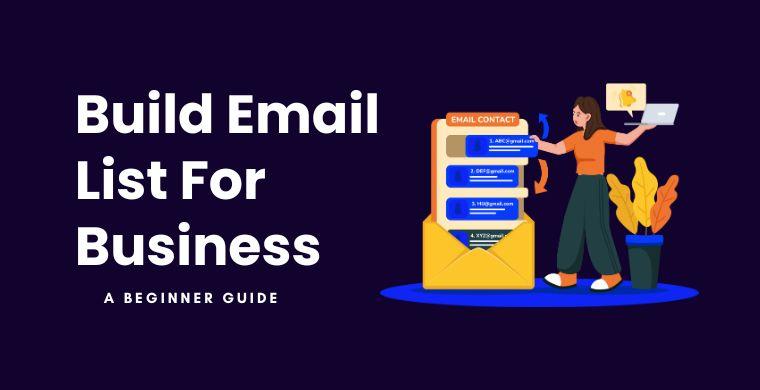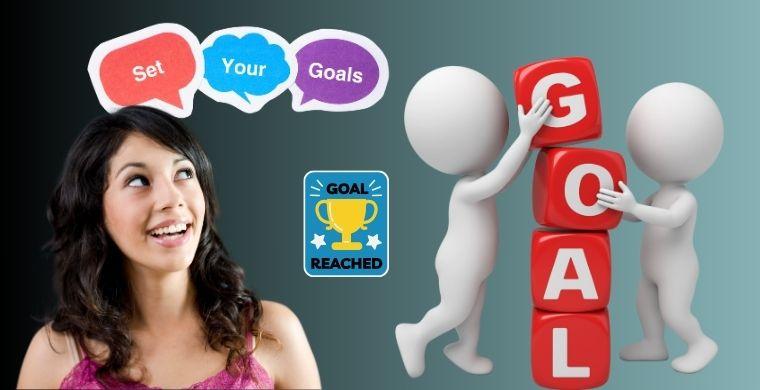How can a beginner build an email list for business?

Learn how to create a successful email list for your business. This step-by-step guide will teach you everything you need to know, from finding your target audience to sending targeted emails.
Introduction
What is an email list?
An email list is like a group of people who want to hear from you. They sign up to get emails from you because they like what you have to say or sell.
Why is an email list important?
Having an email list is like having your army of fans. They can help you:
Sell more stuff
Get more people to visit your website
Build your brand
How to build an email list
Building an email list is like building a garden. You need to plant seeds, water them, and watch them grow.
Step 1: Find Your Target Audience
Who are you trying to reach?
Think about the people who would be most interested in what you have to offer. Are they students, parents, or business owners?
Create a person
Imagine one person who represents your ideal customer. Give them a name, age, and interests. This will help you understand who you're talking to.
What do they need and want?
Think about what your target audience is looking for. What problems are they trying to solve? What do they hope to achieve?
Step 2: Choose an Email Marketing Platform
What is an email marketing platform?
An email marketing platform is like a tool that helps you send emails to your list. It makes it easy to create and send emails, track results, and organize your contacts.
Popular platforms
Some popular email marketing platforms include:
Mailchimp
Constant Contact
AWeber
What to look for
When choosing a platform, think about:
Features: Does it have everything you need, like templates, automation, and analytics?
Cost: How much does it cost to use the platform?
Ease of use: Is it easy to use, even if you're not tech-savvy?
Set up your account
Once you've chosen a platform, create an account and start setting it up.
Step 3: Create High-Quality Content
What is high-quality content?
High-quality content is content that is helpful, interesting, and valuable to your audience. It should be well-written, easy to understand, and relevant to their needs.
Content ideas
Here are some ideas for content you can create:
Blog posts
Newsletters
Ebooks
Videos
Podcasts
Make it interesting
Use stories, examples, and humor to make your content engaging.
Optimize for search engines.
Use keywords that your target audience is searching for to help people find your content online.
Step 4: Build Your Landing Pages.
What is a landing page?
A landing page is a special page on your website that is designed to capture email addresses. It should be focused on one goal: getting people to sign up for your email list.
Create a landing page.
Use your email marketing platform or a website builder to create a landing page.
Keep it simple.
Your landing page should be clear and easy to understand. Use a strong headline, a clear call to action, and high-quality images.
Optimize for conversions.
Test different landing pages to see which ones work best at getting people to sign up.
Step 5: Collect Emails.
How to collect emails.
There are many ways to collect emails, including:
Offer incentives: Give people a freebie, like a discount or ebook, in exchange for their email address.
Use opt-in forms: Put a sign-up form on your website and social media pages.
Use pop-ups: Show a pop-up window to visitors asking them to sign up.
Make it easy to sign up.
Keep your sign-up forms short and simple. Only ask for the information you need, like name and email address.
Be clear about what they're signing up for.
Tell people what they can expect to receive in your emails. This will help them decide if they want to sign up.
Step 6: Segment Your Email List.
What is email segmentation?
Email segmentation is dividing your email list into smaller groups based on shared characteristics. This helps you send more targeted and relevant emails.
How to segment your list.
You can segment your list based on:
Interests: What are your subscribers interested in?
Demographics: What is their age, gender, location, etc.?
Behavior: How do they interact with your emails?
Create targeted content.
Once you've segmented your list, you can create content that is tailored to each group. This will help you get better results.
Step 7: Send Targeted Emails.
What is email automation?
Email automation is using software to schedule and send emails automatically. This can save you time and help you stay organized.
Use email templates.
Create templates for different types of emails, like newsletters, promotions, and welcome messages. This will make it easier to send emails quickly.
Test different subject lines and content.
Experiment with different subject lines and email content to see what works best. Track your results to see what gets the best response.
Personalize your emails.
Use the information you have about your subscribers to personalize your emails. This will make them feel more special and relevant.
Keep it short and sweet.
People are busy, so keep your emails short and to the point. Use a clear subject line and get to the point quickly.
Step 8: Measure and Analyze Results.
What are email metrics?
Email metrics are numbers that help you track how well your email campaigns are performing. Some common metrics include:
Open rate: The percentage of people who open your emails.
Click-through rate: The percentage of people who click on links in your emails.
Conversion rate: The percentage of people who take a desired action, such as making a purchase or signing up for something.
Use analytics.
Your email marketing platform should have built-in analytics that can help you track your results.
Learn from your data.
Use the data you collect to improve your email campaigns. Try different things and see what works best.
Keep improving.
Building an email list is an ongoing process. Keep learning and experimenting to get better results over time.
Conclusion.
Building an email list is a great way to connect with your audience and grow your business. By following the steps we've outlined in this guide, you can create a list of engaged subscribers who are eager to hear from you.
Remember, building an email list takes time and effort. Be patient and consistent, and don't give up. The rewards can be huge.
Here are the key points to remember:
Know your audience: Understand who you're trying to reach and what they need.
Choose a good email marketing platform: There are many options out there, so choose one that's right for you.
Create high-quality content: Your content should be valuable, interesting, and relevant to your audience.
Build landing pages: Use landing pages to capture email addresses.
Collect emails: Offer incentives, and use opt-in forms, and pop-ups to collect emails.
Segment your list: Divide your list into smaller groups based on shared characteristics.
Send targeted emails: Send emails that are relevant to each segment of your list.
Measure and analyze results: Track your results and use the data to improve your campaigns.
By following these steps, you can build a strong email list that will help you achieve your business goals.
business goals.








Comments